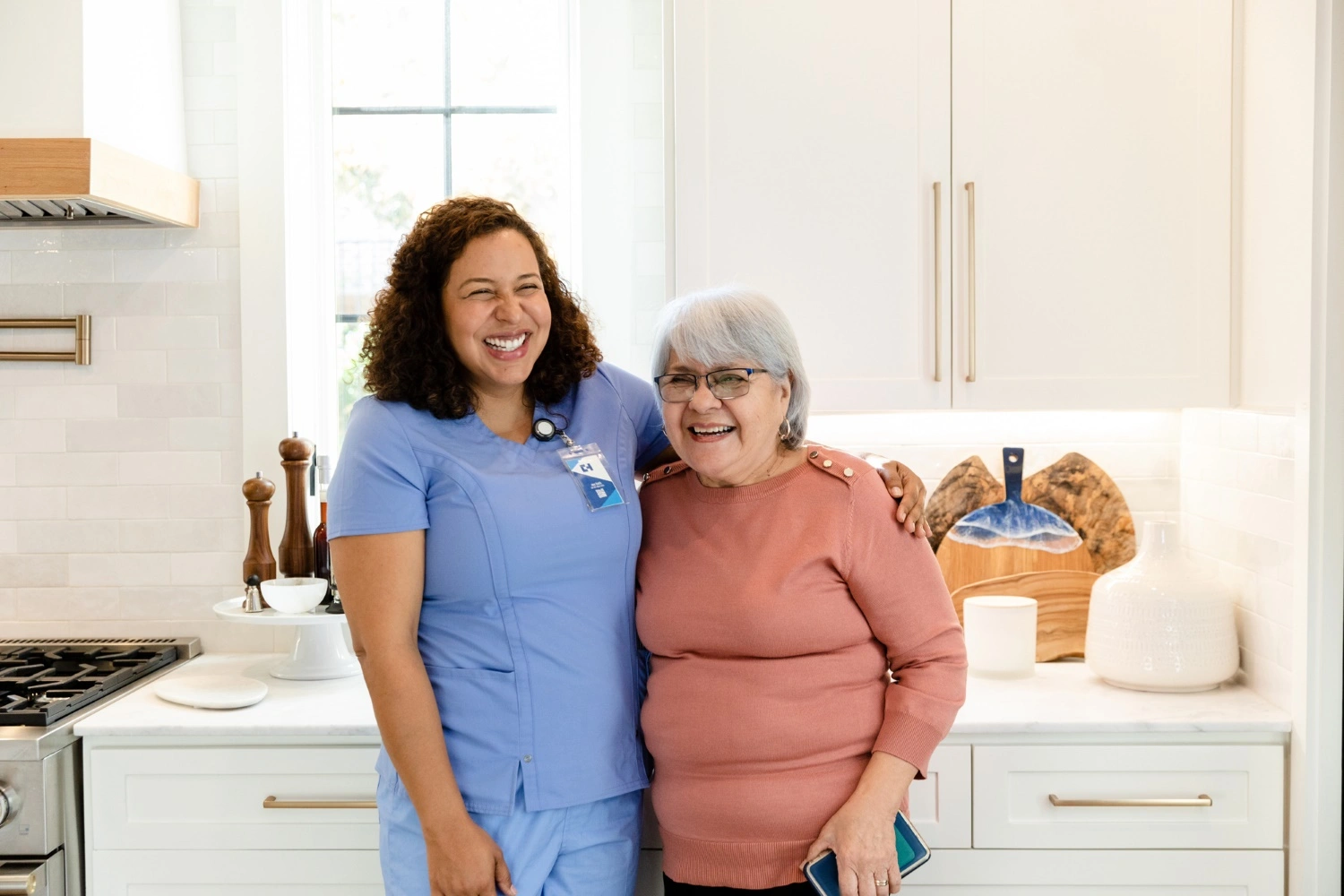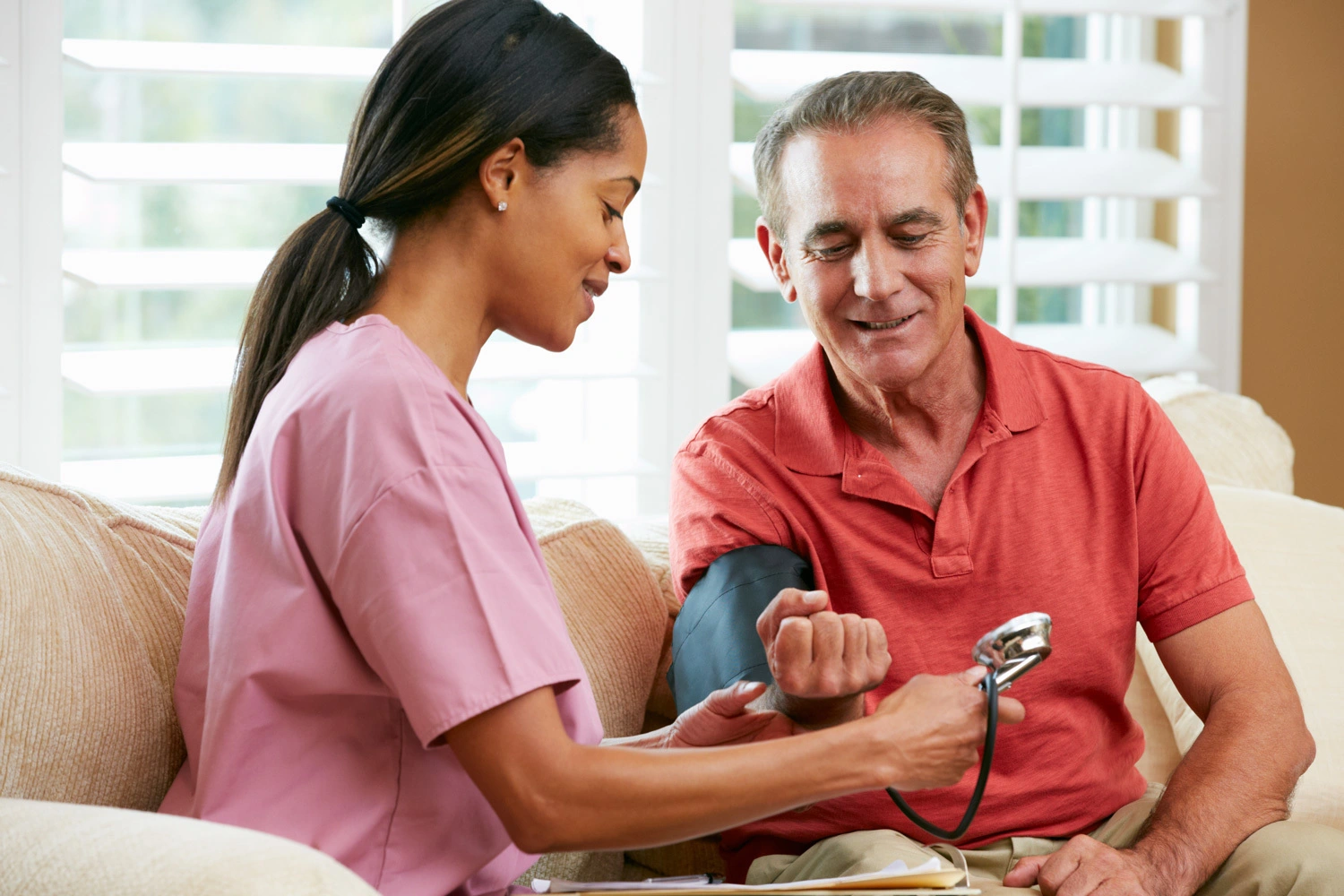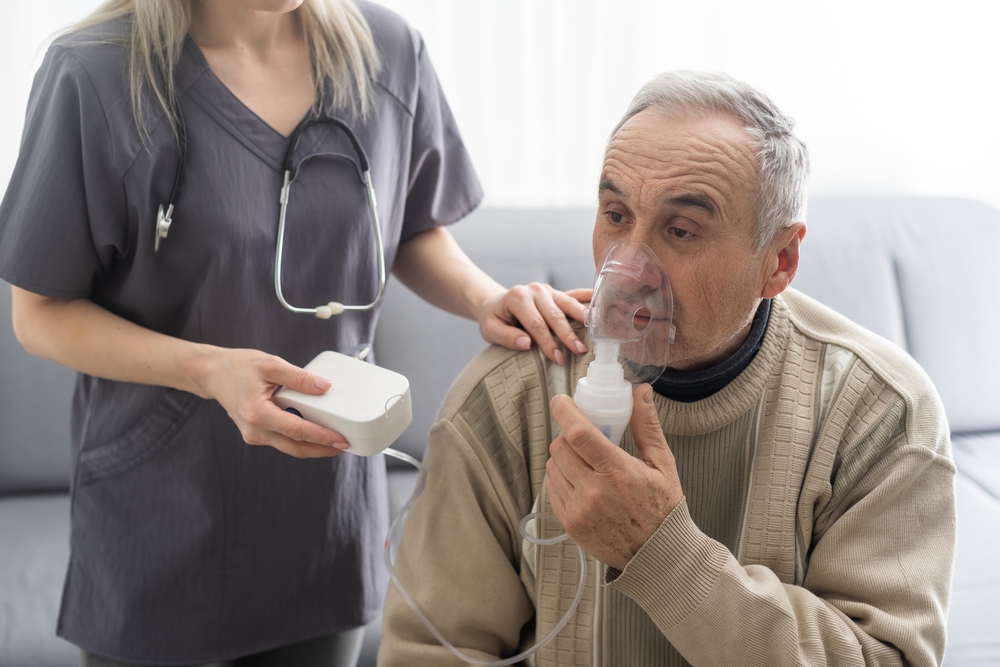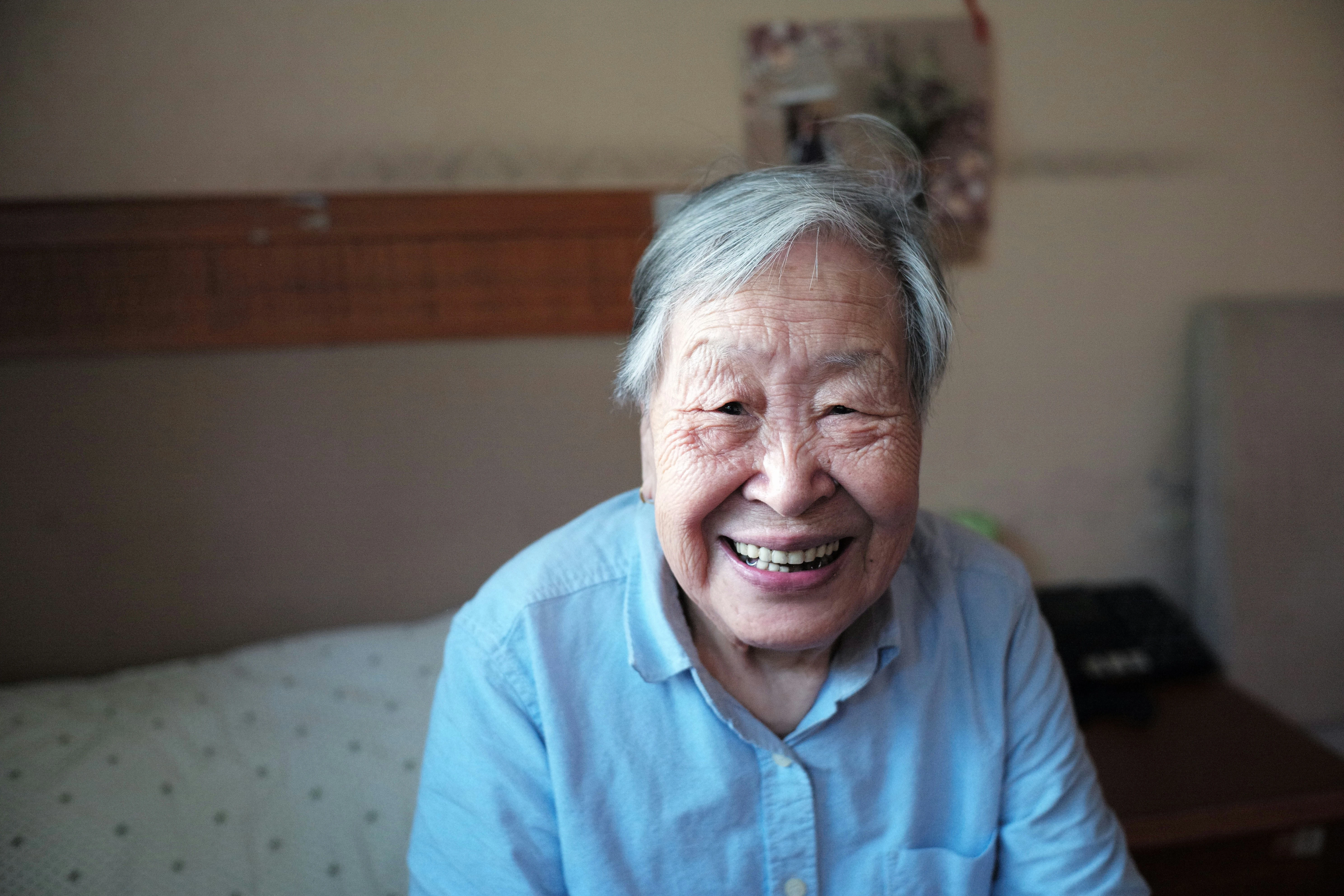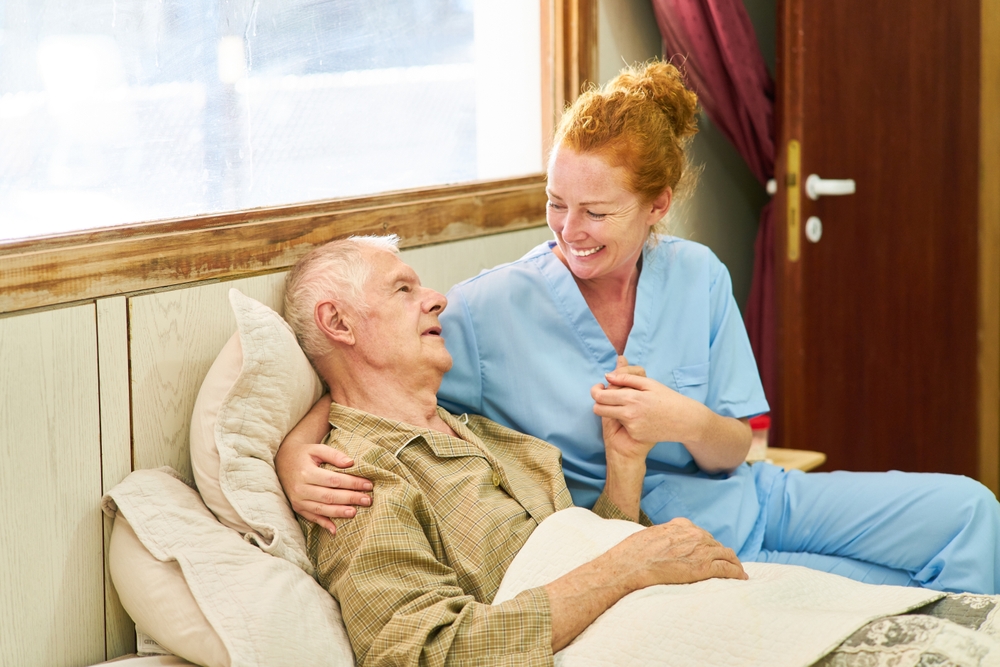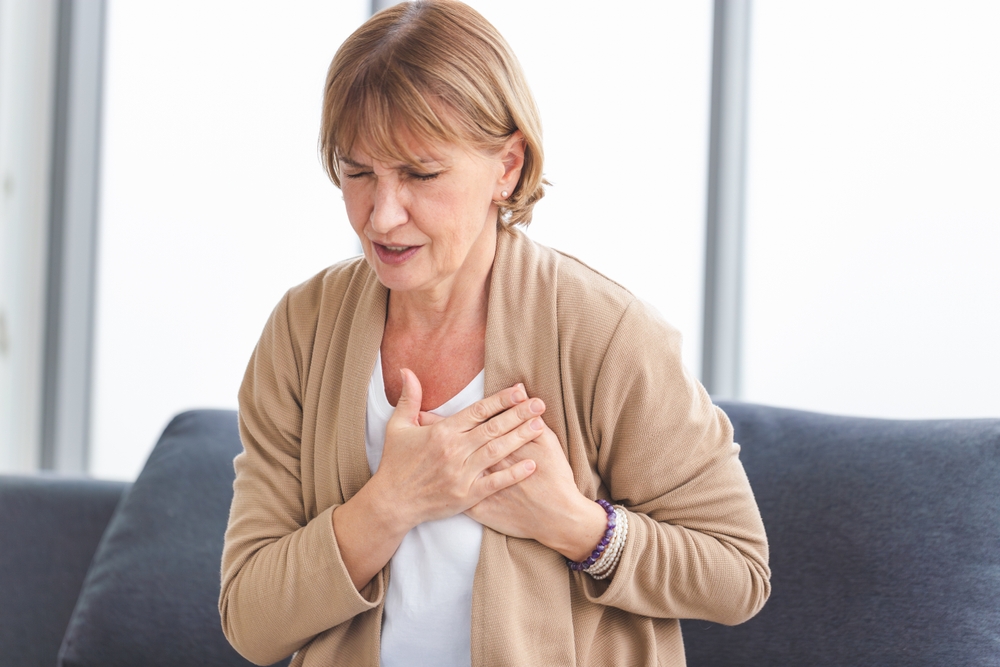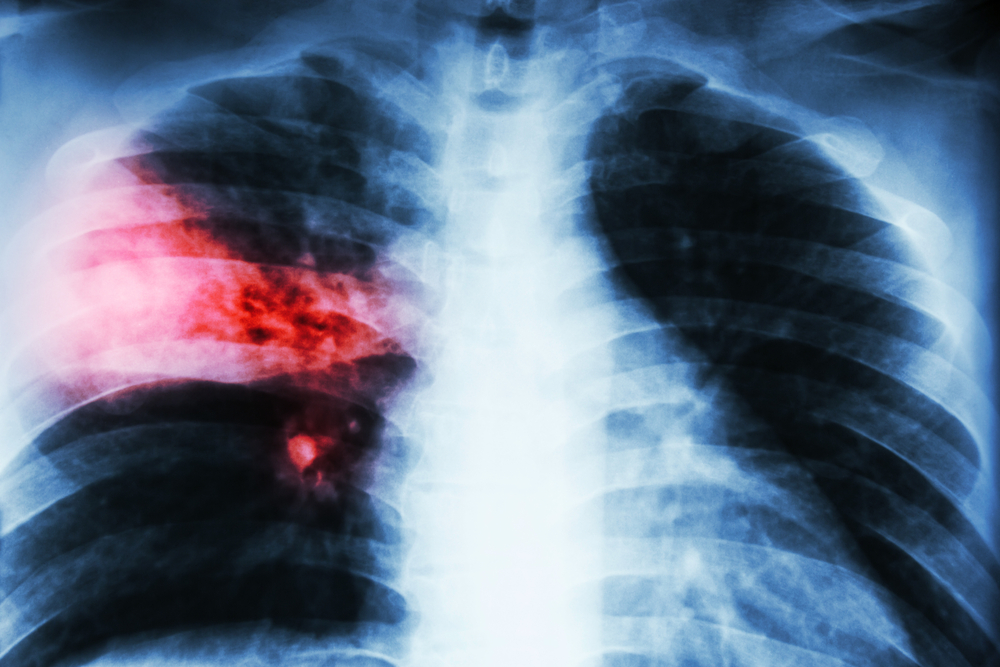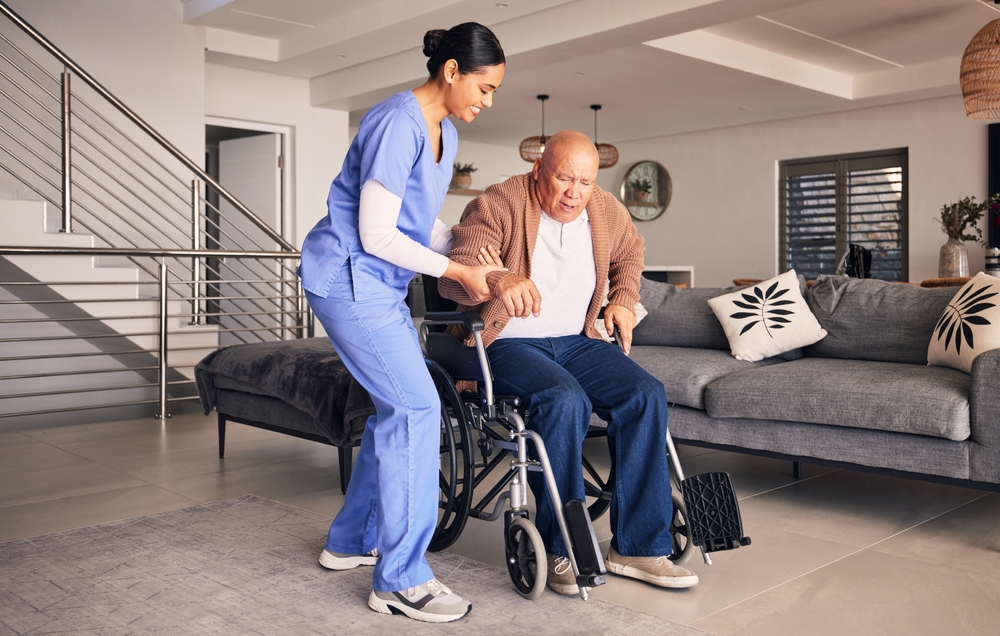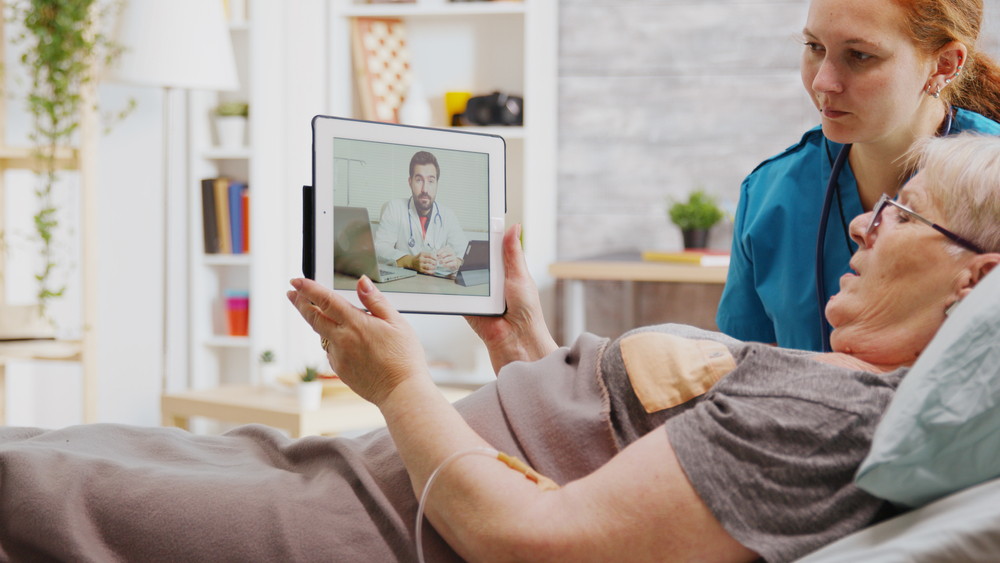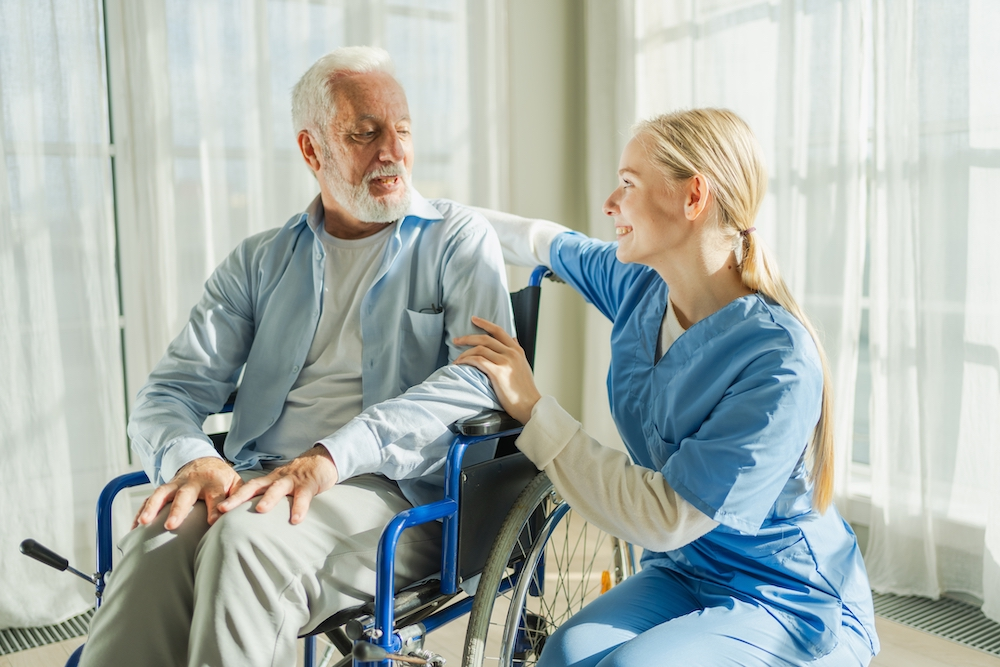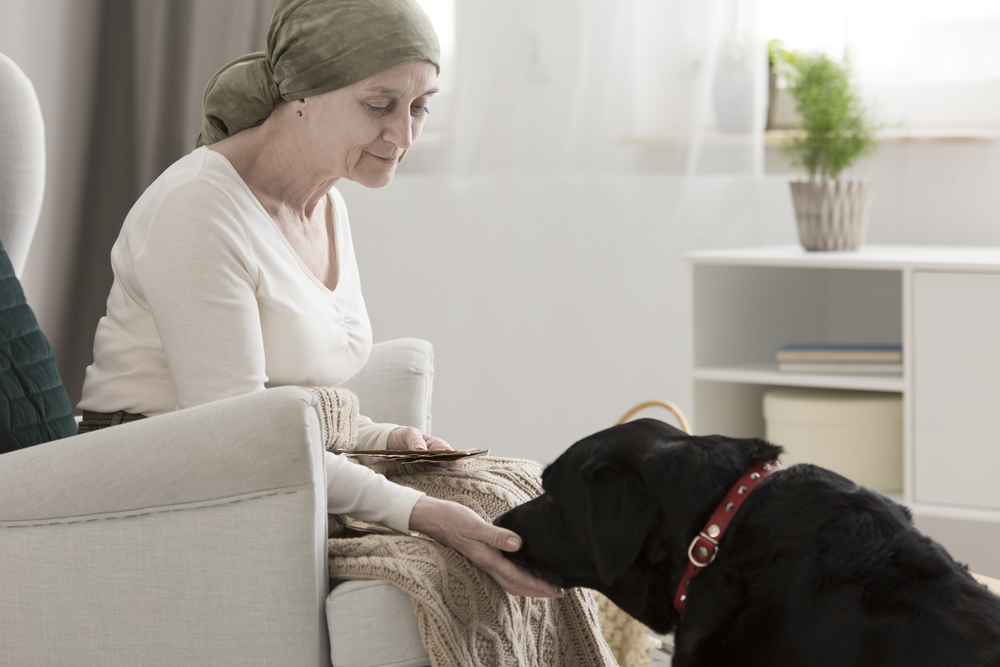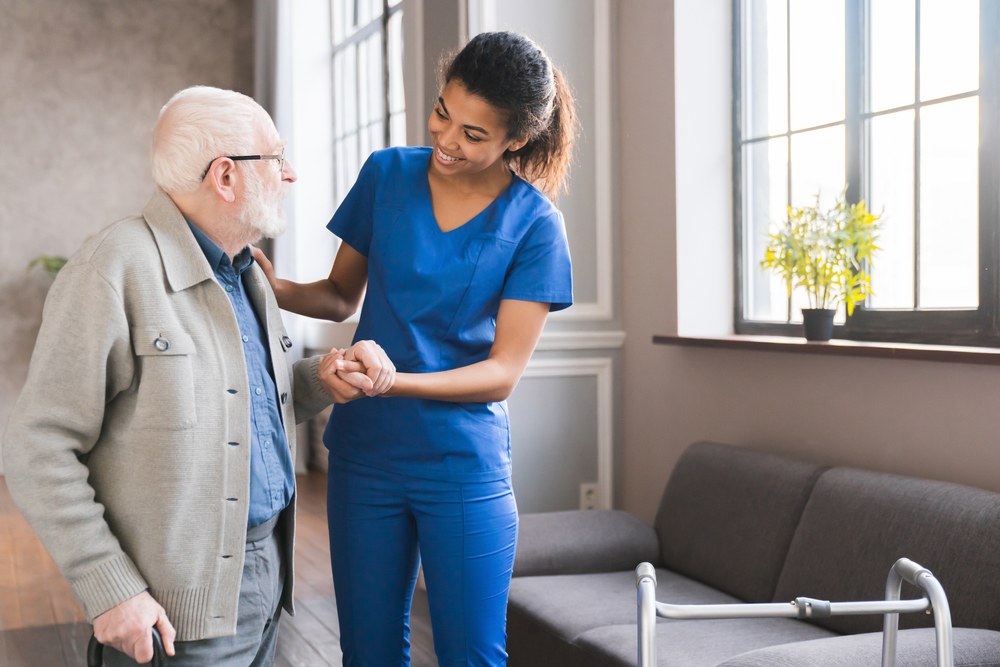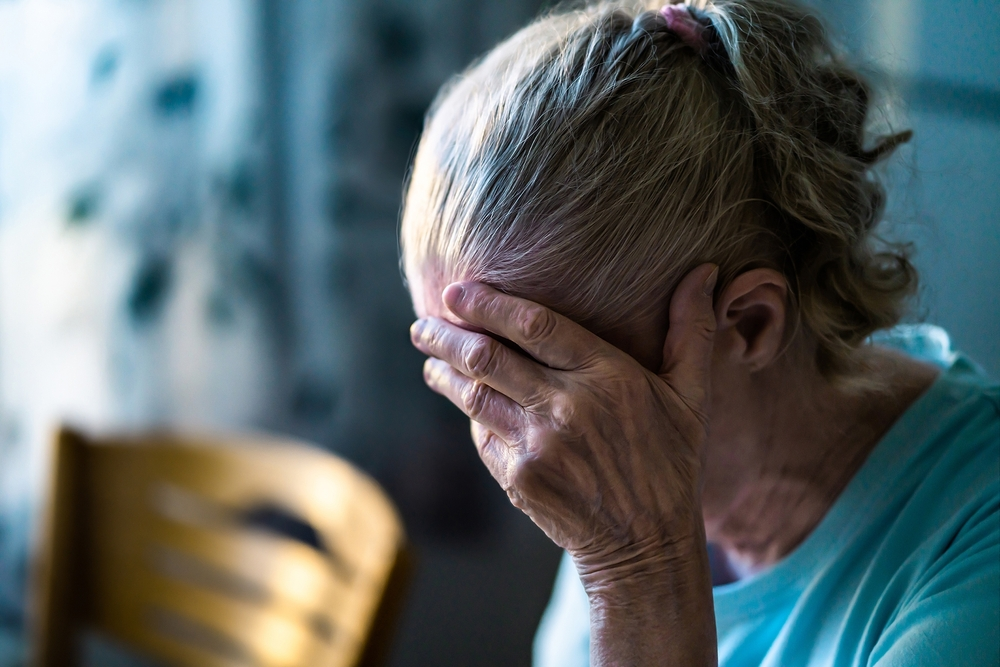However, there are changes that we don't expect or always understand. Sometimes, these changes come on earlier than anticipated, and other times, they may suddenly come on or be more intense than anticipated. One such change is shortness of breath, which includes difficulty breathing and other lung-related issues.When is shortness of breath or shallow breathing in elderly individuals a concern, and when is it something to be expected with aging? Let's look at this issue, its causes, potential treatments, and when you should be concerned with labored breathing in an elderly loved one. What is Shortness of Breath in Elderly Individuals?Clinically known as Dyspnea and colloquially known as "feeling winded," shortness of breath occurs when you can't get enough air into your lungs. This is usually accompanied by the feeling that it's harder to inhale, causing quick and gasping breaths. While there are several conditions that can cause shortness of breath, most of them result in the lungs failing to get enough oxygen. The body reacts by trying to take deeper breaths or breath more quickly.Many people find shortness of breath scary, especially when it comes on unexpectedly. The feeling of their chest tightening, their breathing becoming labored, and the thought that they might suffocate can trigger a panic attack or other anxiety issue, making the shortness of breath even worse.Shortness of breath doesn't always manifest in the same way. Some people describe it as feeling like they have to breathe rapidly or need to take a deep breath but can't. Others find it hard to catch their breath or feel like they're huffing and puffing. Your shortness of breath may not be the same as someone else's, and you may experience all of these types of shortness of breath at different times.Unfortunately, there is no way to predict shortness of breath: it can happen suddenly when you least expect it. This is as true of shortness of breath in elderly individuals as in younger people, especially those with specific breathing conditions. People with reactive airway disease or RADs, for example, may suddenly find it difficult to breathe when exposed to specific cleaners, fumes, or other triggers.Sometimes, shortness of breath in elderly women and men occurs alone, but other times, its an acute symptom that occurs with other symptoms such as swelling, wheezing, coughing, fever, or chest pains. What are the Symptoms of Shortness of Breath?No one person will experience shortness of breath the same, but there are a number of symptoms that could happen. Some people will experience tightening of the chest, difficulty breathing, or an intense feeling of being suffocated. Others might experience severe coughing, shallow breathing, or wheezing. The symptoms often depend on what has caused your shortness of breath. Those having an asthma attack may also wheeze and feel their throat tighten up, while those who have shortness of breath due to an allergic reaction may also have itching or a rash.Typically, most individuals will experience some kind of labored breathing and heart palpitations (rapid, fluttering heartbeats). While labored breathing in an elderly person may be cause for concern, shortness of breath isnt always an emergency. However, those who experience blue lips need to go to the emergency room as soon as possible because this is a sign of not enough oxygen. It can result in damage to the organs, including the heart and brain. What Causes of Shortness of Breath in Seniors?There are several causes of shortness of breath in the elderly, but the distinction between healthy and potentially ill seniors must be made. While shortness of breath in elderly people can always be concerning, its not always an emergency. For example, in a recent study by the University of Gothenburg, it was found that 30% of seniors suffered from shortness of breath during exercise. This means that, although it can be expected in those 65 years and older, it doesnt happen to all seniors. However, even healthy seniors should be cognizant of how often they find themselves short of breath. This is mainly because shortness of breath is actually an indicator of potentially serious diseases. Here are some of the causes of shortness of breath in seniors and when this condition needs to be treated as an emergency. Intense Physical ActivityIntense physical activity can cause shortness of breath for seniors with no known health problems. This could be their regular fitness routine or something different, like a vacation hike in the mountains. Often, this shortness of breath will pass within a few minutes after taking a rest, and it's not usually serious. High AltitudeHigh altitude is another common cause of shortness of breath since the air has fewer oxygen molecules than in lower altitudes. While your body will adjust if you remain in this higher altitude for several days, it does take longer if you typically live closer to sea level or already have a breathing condition. If you're visiting a location that is at a significantly higher altitude than where you live, be aware that you may have more difficulty breathing than you normally do, and take that into account. Cold or Dry ClimateEven temperature can be a cause of labored breathing in elderly people: colder climates make it harder to take in oxygen, and warmer climates can just be dry. Either extreme can affect how much oxygen an individual's lungs take in and use effectively. Take note of the climate you're traveling to and take precautions. If you're going somewhere cold, plan on doing indoor activities as much as possible. Invest in a travel humidifier for dry areas to help your breathing at night. PollutionPollution can also be a significant factor if the senior lives in specific cities or areas. Los Angeles, for example, is known for its smog alerts and low oxygen quality. Breathing in this pollution can lead to everything from wheezing and coughing to asthma, stroke, and even lung cancer in extremely polluted areas. Living in these areas can be dangerous for difficult or labored breathing. You may want to consider moving to one of the suburbs, such as Riverside, San Jacinto, Palm Springs, or Murrieta, where the air is less polluted. What Diseases Cause Shortness of Breath?In addition to the above causes of shortness of breath in the elderly, some diseases also cause or can be identified by shortness of breath. Shortness of breath seems to be a common symptom of either lung or heart-related diseases. Since oxygen is so important throughout our bodies, filtered through the lungs and carried to our heart through our blood, this is not unexpected.There are several known diseases that shortness of breath can be caused by: AsthmaAsthma is a common health condition that is defined by repeated shortness of breath, wheezing, coughing, and tightness in the chest. Those with asthma may find it worse when around specific allergens such as pet dander. These triggers can cause asthma attacks that often require an emergency inhaler to control. Many with asthma also take a daily inhaler or other medication to keep the condition under control. Pulmonary Infections such as PneumoniaAny type of infection that affects the lungs can cause shortness of breath. Pneumonia is one of the most common pulmonary infections, and it can lead to coughing, chills, and fever, along with shortness of breath. In some cases, pneumonia can even be life-threatening, so if you notice labored breathing in an elderly family member along with these other symptoms, they need to see a doctor. Interstitial Lung DiseaseInterstitial lung disease is an umbrella term that includes any type of disorder that causes scarring in the lung tissue. This scarring makes breathing harder or getting enough oxygen into the body. It can be caused by rheumatoid arthritis and other autoimmune diseases or exposure to asbestos hazards. In some cases, the cause is unknown. While medication can help slow down the damage's progression, those with interstitial lung disease often never fully recover. In severe cases, a lung transplant is needed. Chronic Obstructive Pulmonary Disease (COPD)COPD is caused by lung inflammation that makes it harder to get enough oxygen. In addition to shortness of breath, elderly patients may feel winded often, experience some wheezing and cough, or produce more mucus than normal. COPD is often caused by smoking and other exposure to hazards that affect the lungs. Chronic bronchitis and emphysema are the two main conditions that lead to COPD. It can be treated, especially by those who manage the condition correctly. Heart ArrhythmiaA heart arrhythmia occurs when a person's heartbeat isn't regular due to an issue with the signals that control the muscle. When the heart beats too quickly or does what is called a premature heartbeat, it can lead to shortness of breath and pain in the chest. This also often leads to anxiety, which can then cause a panic attack. Fortunately, some medications and procedures can be used to treat heart arrhythmia. Heart FailureHeart failure can also be treated if caught early and if you are willing to make some changes to your lifestyle. However, it can also be life-threatening. Heart failure has many symptoms, including shortness of breath. Typically, this shortness comes when lying down or doing any activity. Those who experience fatigue, swelling in the legs and feet, a cough, rapid weight gain, and nausea should see a doctor. Carbon Monoxide PoisoningCarbon monoxide has no odor, color, or taste to it, so it can be incredibly difficult to tell if youve been exposed to it. Inhaling carbon monoxide can lead to shortness of breath, vomiting, dizziness, and confusion. It can even be life-threatening if you lose consciousness in a room full of carbon monoxide. Fortunately, this is one of the causes of shortness of breath in elderly people that can easily be treated. Once the carbon monoxide leak is repaired or the person leaves the area, the symptoms should clear up. Hiatal HerniaA hiatal hernia is a type of hernia that affects the upper part of the stomach and the muscle between the chest and the abdomen. When the stomach is pushed up through the hiatus, the small opening in the diaphragm, this type of hernia occurs. It can put pressure on the diaphragm, leading to shortness of breath as well as other issues. Taking specific medications or having surgery to repair the hernia will alleviate the shortness of breath.If you or an elderly loved one is experiencing shortness of breath, it's essential to see a doctor as soon as possible. Many of these health conditions are treatable or manageable with proper care. Who is at Risk of Shortness of Breath?There are a number of factors that can make one more susceptible to labored breathing or shortness of breath. Those who smoke are very likely to develop some kind of lung-related condition, including lung cancer. Elderly people who have labored breathing or who experience any signs of low oxygen need to stop smoking immediately. The lungs can repair themselves over time, but not if you continually smoke.Living or working in a space with asthma or allergy triggers also puts you at risk of shortness of breath. This means you may need to speak to your employer about your triggers or work with a doctor to find a medication that helps reduce the risks of asthma attacks. Removing the carpets from your home or regularly vacuuming will help at home, as will having your home checked for mold.Those who do not exercise regularly may find themselves dealing with shortness of breath upon exertion. This is why its important for everyone, including seniors, to do some type of exercise regularly. Even if you cant do aerobics or go for a job, there are things you can do to keep your muscles strong. Your doctor can help you learn more about exercises that will help your body without wearing you out or causing any damage to areas such as your knees or back.As already mentioned, if youve moved to or are visiting a higher altitude, youre going to be more susceptible to shortness of breath. Take it easy for a few days after arriving to give your body some time to adjust.If you take certain medications, be certain to read the side effects. Some can cause shortness of breath, especially if you stop taking them suddenly. Talk to your doctor or pharmacist about any medication you start, and make certain you understand any and all side effects. How is Shortness of Breath Treated? Treatment of shortness of breath in elderly patients depends on the cause: shortness of breath can indicate several different health issues that could be connected. If the reason is asthma or bronchitis, an inhaler or antibiotics will be prescribed by a doctor. If its something like a hiatal hernia, the hernia may need to be surgically repaired first.If the shortness of breath is caused by something more serious, such as congestive heart failure or COPD, a longer treatment time is involved. Sometimes, surgery is necessary, while other times, less invasive procedures can be done.In cases where there are environmental factors such as asthma, RADs, allergies, and carbon monoxide poisoning, leaving the area or working to reduce the triggers in that space will help. Even if one of these factors isn't the primary cause of shortness of breath, they can contribute. That's why it's essential to keep a clean environment, and this will reduce potential instances of shortness of breath. Accumulated dust encourages dust mites and makes it much harder to breathe. Regular, thorough cleanings are recommended to reduce the dust and potential allergens in your house.Those who experience shortness of breath when exerting themselves may find that engaging in slow, steady exercise helps over time, and this builds up the muscles and allows you to do more with less exertion. When Should You Seek Medical Care?While you should always mention any shortness of breath to your doctor at your regular checkups, there are some cases when shortness of breath indicates a medical emergency.Any time you experience unexpected or severe shortness of breath is concerning. If you feel like you cannot catch your breath after a few minutes, contact your doctor or go to the emergency room. Also, seek medical attention if you have a rescue inhaler but don't feel relief after using it.Chest pains, nausea, fever, swelling, and other symptoms, along with shortness of breath, can indicate a serious issue. Again, you should seek medical care, especially if these symptoms are new or unusually severe. Other serious symptoms include a bluish tint to your lips or fingernails and any change in mental awareness, which could be signs of a heart attack.Talk to your doctor if you experience shortness of breath daily or to the point that it affects your daily life. You may require medication or other treatment. Shortness of Breath in Senior Home Health CareBecause the elderly often deal with shortness of breath, home health experts need to understand the condition and be able to recognize when it's serious. Interim HealthCare offers compassionate, expert caregivers has this level of knowledge and training.Our skilled team members are able to help recognize changes in your senior loved ones health and routine. Many seniors will brush off problems, like shortness of breath, as simply getting old. While age does play a part, its often not the only cause of shortness of breath. We will help them recognize when its more than just aging.Our elderly caregivers can make suggestions to loved ones and the seniors themselves when necessary. They are also there with the senior in case of emergencies. We can help your loved one with medications, exercises, daily tasks and provide companionship throughout the day.
